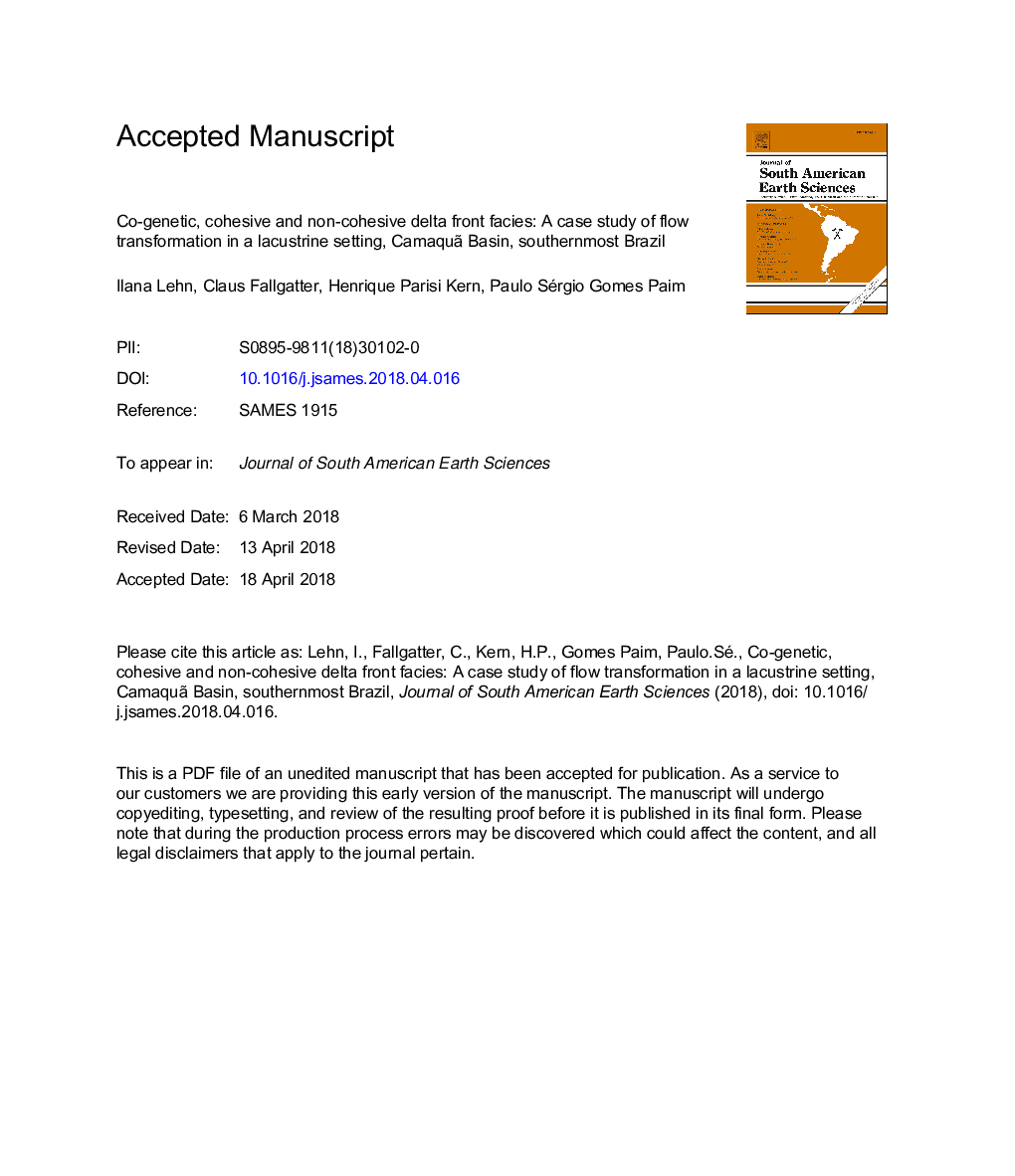| کد مقاله | کد نشریه | سال انتشار | مقاله انگلیسی | نسخه تمام متن |
|---|---|---|---|---|
| 8907590 | 1635124 | 2018 | 47 صفحه PDF | دانلود رایگان |
عنوان انگلیسی مقاله ISI
Co-genetic, cohesive and non-cohesive delta front facies: A case study of flow transformation in a lacustrine setting, Camaquã Basin, southernmost Brazil
دانلود مقاله + سفارش ترجمه
دانلود مقاله ISI انگلیسی
رایگان برای ایرانیان
موضوعات مرتبط
مهندسی و علوم پایه
علوم زمین و سیارات
علوم زمین و سیاره ای (عمومی)
پیش نمایش صفحه اول مقاله

چکیده انگلیسی
Sediment gravity flows comprise gravity-driven underflows with a large concentration of suspended load. Along the downslope transport, flow transformations from laminar to turbulent conditions or vice-versa can take place due to several factors, including the incorporation and segregation of clay into, or from the flow. These flow changes may produce hybrid behavior and resulting hybrid event beds. Flow transformation and hybrid events are widely discussed in marine settings, but studies on lacustrine environments are rare. The Ediacaran Western Santa Bárbara Rift represents one stage of the development of the Camaquã Basin and includes both cohesive (debrites) and non-cohesive (turbidites) gravity flow deposits associated with braidplain deltas deposited in shallow lake. A range of cohesive and non-cohesive density flow facies is here discussed in terms of triggering mechanism, genetic processes and related flow transformations. The analysis of aerial images combined with outcrop descriptions allowed the identification and mapping of key stratigraphic surfaces and therefore associated systems tracts. Sedimentological and gamma-ray logs, sampling and laboratory analyses (optical microscopy, X-ray diffraction -XRD - and Scanning Electron Microscopy - SEM) were performed to define facies and facies associations. Microscopy was useful to identify vermiculite as an important matrix component. The position of distinct facies within the genetic stratigraphic framework allowed the construction of a generalized facies tract model. The basinward shift of facies indicates three flow transformations, in addition to hybrid flows. Substrate erosion, and ensuing incorporation and fragmentation of mud clasts into turbulent flows caused changes from fluidal to plastic flow rheology. Generalized facies tracts suggest fluvial floods (and resulting hyperpycnal flows) as the triggering mechanism for the subaqueous density flows herein described.
ناشر
Database: Elsevier - ScienceDirect (ساینس دایرکت)
Journal: Journal of South American Earth Sciences - Volume 86, October 2018, Pages 271-286
Journal: Journal of South American Earth Sciences - Volume 86, October 2018, Pages 271-286
نویسندگان
Ilana Lehn, Claus Fallgatter, Henrique Parisi Kern, Paulo Sérgio Gomes Paim,